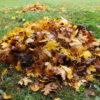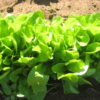Description
Crosby’s Egyptian Beet (A.K.A. Early Crosby Egyptian)
Planting Instructions for Crosby’s Egyptian Beet Seeds
When to Plant:
Sow Crosby’s Egyptian beet seeds outdoors in early spring, about 3 weeks before your last expected frost date, as soon as the soil can be worked. For a fall crop, plant seeds 10 to 12 weeks before your first fall frost. In regions with mild winters, Crosby’s Egyptian beets can also be grown during the cool season. Continue planting in succession every 1–2 weeks until late spring and again starting in late summer to extend your harvest.
Where to Plant:
Crosby’s Egyptian beets prefer full sun and loose, well-drained soil with a pH between 6.0 and 7.0. Avoid planting in heavy clay soil unless amended with compost or other organic matter. Raised beds and deep containers (at least 12″) are excellent options for improved drainage and root development. Choose a location that gets at least 6 hours of sunlight daily.
How to Sow Seeds:
Soak Crosby’s Egyptian beet seeds in room-temperature water for 1 to 12 hours before planting to speed germination. Sow seeds ½ inch deep and 1–2 inches apart in rows spaced 12 to 18 inches apart. Each seed is actually a cluster and may sprout multiple seedlings. Once seedlings are 3–4 inches tall, thin them to 2–4 inches apart. Thinned greens are edible and nutritious.
Growing:
Keep soil consistently moist during germination, which usually takes 7 to 20 days. Water daily or as needed to maintain surface moisture. Once plants are established, provide about 1 inch of water per week. Mulch with straw or shredded leaves to retain moisture and protect the beet shoulders from sun exposure. Hill compost around young seedlings to support growth and provide steady nutrition.
Care Tips:
Weed regularly, especially while plants are young. Avoid disturbing the roots when weeding or thinning. Crosby’s Egyptian beets benefit from low-nitrogen, phosphorus-rich fertilizers. Apply compost or a balanced organic fertilizer (such as 5-10-10) at planting and again after 4 weeks. Use floating row covers to protect young plants from pests like flea beetles and leaf miners. Rotate crops annually to prevent disease buildup in soil.
Harvesting:
Crosby’s Egyptian beet greens can be harvested as needed once they are 4 to 6 inches tall—take no more than 1 or 2 leaves per plant to avoid slowing root growth. Crosby’s Egyptian beets are ready for harvest about 55 to 60 days after planting, when the roots reach 1–3 inches in diameter. Water the soil the night before, then gently lift roots using a trowel or by hand. Trim off greens, leaving about 1 inch of stem attached to reduce bleeding.
Storage:
Brush off excess dirt—don’t wash until ready to use. For short-term storage, store Crosby’s Egyptian beet roots in a perforated plastic bag in the refrigerator for up to 2 weeks. For long-term storage, place unwashed roots in a container with moist sand in a cool, dark location.
Seed Saving:
Crosby’s Egyptian beets don’t produce seed until their second year of growth. To save seed, you’ll need to keep healthy, mature roots from your harvest and store them over winter in a cool, humid place. In early spring, replant those roots in the garden, spacing them well apart. They will grow flower stalks and produce seeds by midsummer. Crosby’s Egyptian beets cross easily with Swiss chard, so isolate flowering plants by at least 1–3 miles for pure seed.
Once the seeds are dry, store them in an airtight container in a cool, dry place—ideally kept around 59°F (15°C) with relative humidity levels between 40% and 60%. Avoid locations where temperatures rise above 68°F (20°C) or drop below 33°F (1°C). Properly stored, Crosby’s Egyptian beet seeds can remain viable for 2 to 5 years. We also offer Seed Saving Envelopes to help keep your harvested seeds neat and organized.
FAQ:
What is the historical or notable background of Crosby’s Egyptian Beet?
This heirloom beet, developed by Josiah Crosby and introduced in 1885 by James J. H. Gregory, is a refined version of the ‘Flat Egyptian’ variety. It originated in Germany and gained popularity in late 19th-century American gardens for its dependability and excellent storage qualities.
How would you describe the flavor profile of Crosby’s Egyptian Beet?
This variety offers a sweet, earthy flavor with a vibrant richness, making it a versatile and delicious addition to various dishes.
What does Crosby’s Egyptian Beet look like?
The beets have a uniform, flattened, heart-like shape with a dull red exterior and a rich, dark red interior. They typically grow to 2–3 inches in diameter and feature smooth skin. The tops are upright and lush, reaching up to 16 inches, perfect for fresh greens.
What are the growth habits and garden appeal of Crosby’s Egyptian Beet?
Thriving in full sun and cooler climates, this variety matures in just 55–60 days. It performs reliably and is a great choice for early and late-season harvests, with robust plants that resist common pests and diseases.
What climate conditions are ideal for growing Crosby’s Egyptian Beet?
This beet flourishes in full sun and cooler climates, making it suitable for early fall and late autumn harvests.
What are the common culinary uses for Crosby’s Egyptian Beet?
These beets are excellent for roasting, pickling, or grating fresh into salads. Their vibrant color and sweet, earthy flavor enhance many dishes.
How should Crosby’s Egyptian Beet be stored and practically used?
Known for its excellent storage qualities, this variety retains its texture and flavor for months when stored properly, making it a reliable pantry staple through the cooler seasons.
What vitamins or nutrients does Crosby’s Egyptian Beet contain?
This variety is rich in essential vitamins and nutrients, including vitamin C, folate, potassium, and fiber, supporting overall health and wellness.
Does Crosby’s Egyptian Beet have any notable disease resistance?
Yes, this variety shows moderate resistance to common pests and diseases like aphids and leaf miners, ensuring healthy and plentiful harvests.




















Steven Amthor (verified owner) –
So far so good!